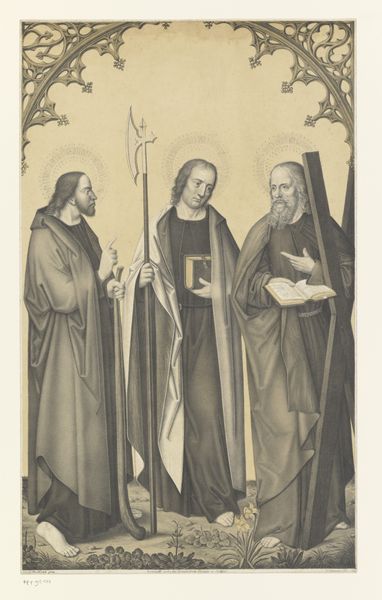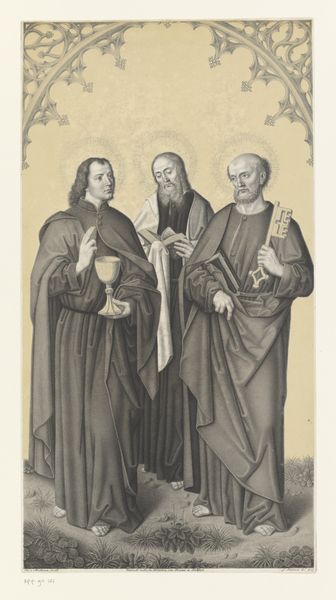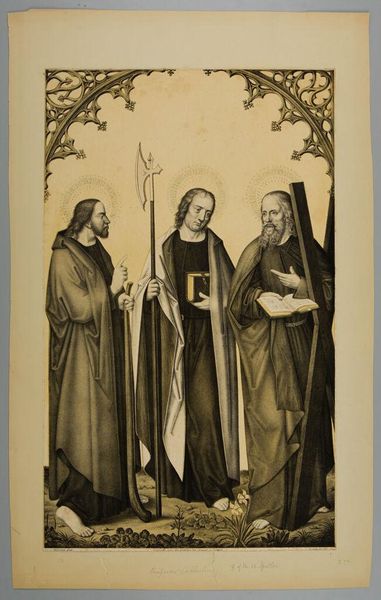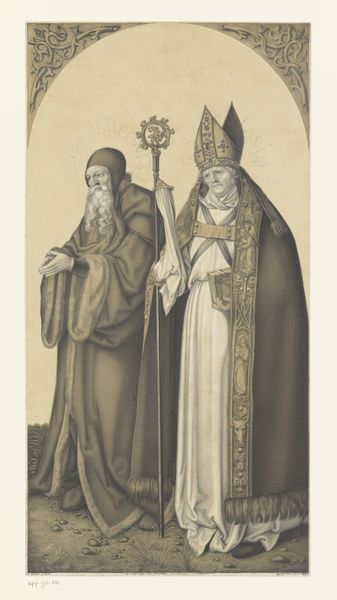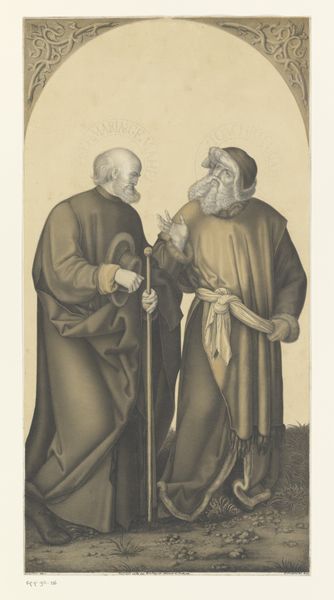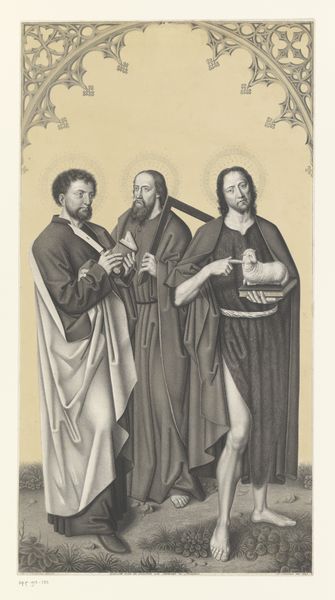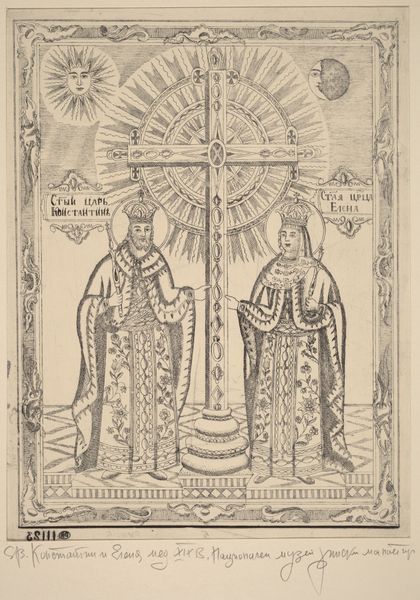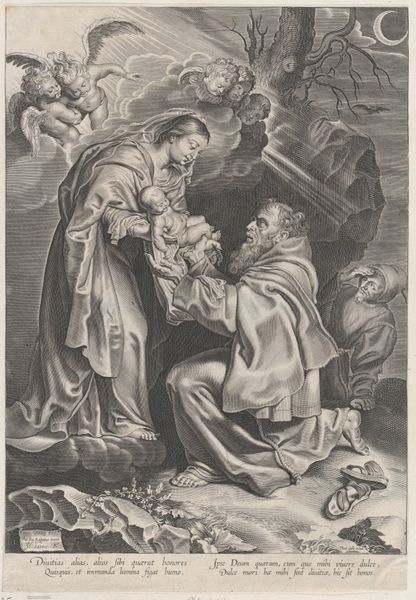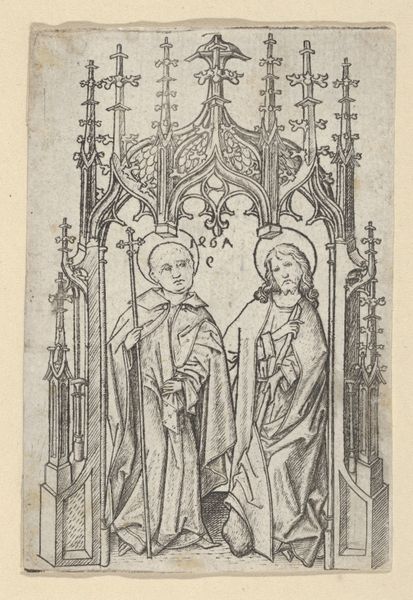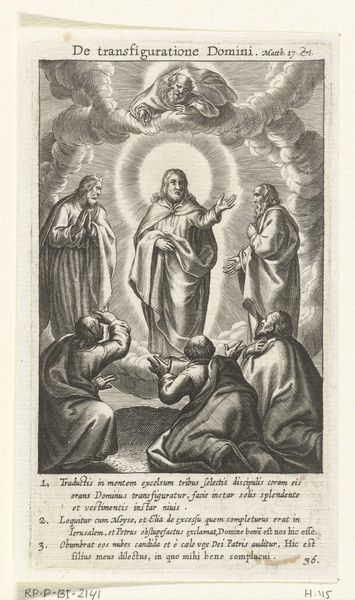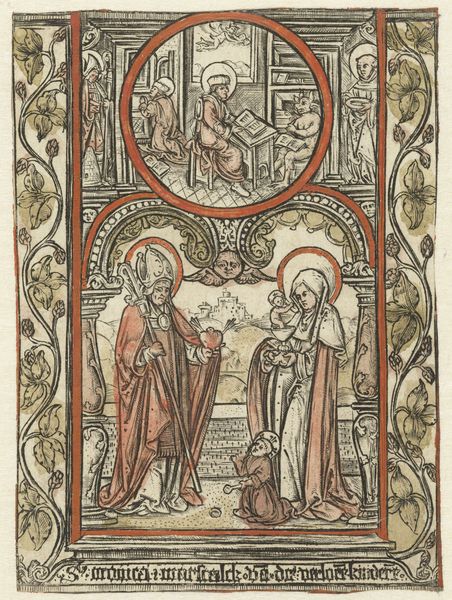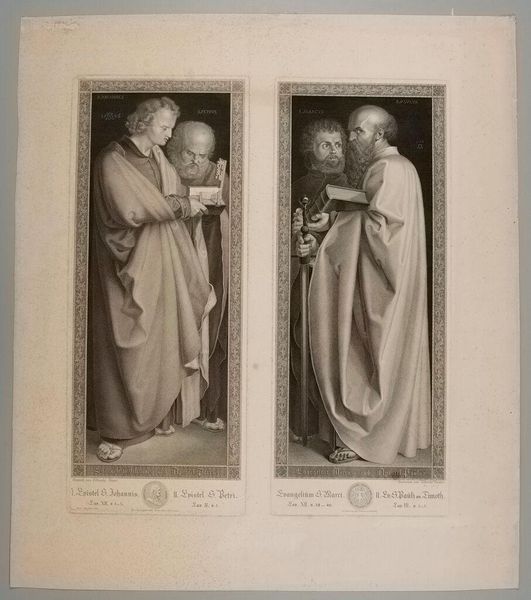
drawing, print, engraving
#
portrait
#
drawing
# print
#
caricature
#
figuration
#
cross
#
group-portraits
#
19th century
#
portrait drawing
#
history-painting
#
academic-art
#
engraving
Dimensions: height 568 mm, width 348 mm
Copyright: Rijks Museum: Open Domain
Curator: Welcome. Today, we're looking at "Heilige Paulus, Simon en Filippus," an engraving from 1824 by Johann Nepomuk Strixner. Editor: Wow, quite formal, isn’t it? They all look like they're posing for a very serious band photo, complete with props and halos, ha! Curator: The composition does strike a formal pose, indeed. Note how the three figures—saints Paul, Simon, and Philip—are presented frontally and in equal measure, arranged under an embellished arch. Each element seems meticulously planned for maximum clarity and didactic impact. Editor: Didactic for sure. The props really tell the story, don't they? One has a cross, another has a book, and the other a…rather intimidating-looking sword. Curator: Precisely. The attributes of each figure, the cross, book, and sword, serve as visual signifiers, offering clues to their identity and roles within Christian narratives. Furthermore, observe the contrasting textures rendered solely through engraving: the softness of the robes against the hardness of the metallic elements. Editor: I get what you’re saying, the use of monochromatic values for contrast definitely emphasizes the tangible presence of those textures, and really brings their different spiritual authority to light too. Is that fair to say? Curator: Yes, the contrasting material depiction emphasizes their sacred nature, certainly, reinforced by the inclusion of the three halos. Notice, also, how their gazes converge towards the viewer, suggesting an engagement, an almost beckoning presence. Editor: And yet, for all their posed solemnity and clear symbolism, I still feel this peculiar tension. Is it perhaps in the fact that all three of them have the same Romanesque bare feet and sandals, adding some earthly relatability? I feel it kinda gives a human touch. Curator: Indeed, the choice of barefoot figures amidst the grandeur serves as a counterpoint, humanizing the divine, reminding us that the spiritual exists also within the corporeal. A subtle yet crucial nuance in understanding the print’s layers of meaning. Editor: It all makes for a surprisingly complex, slightly ironic effect given its academic leanings. It's got me thinking about authority, presentation, and human nature... Not bad for an old engraving. Curator: And in considering the convergence of symbol, composition and affect, we enrich not only our perception of this print, but potentially of ourselves as well.
Comments
No comments
Be the first to comment and join the conversation on the ultimate creative platform.
